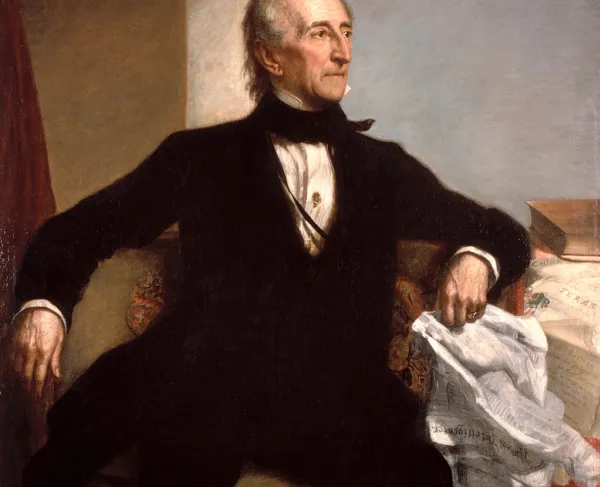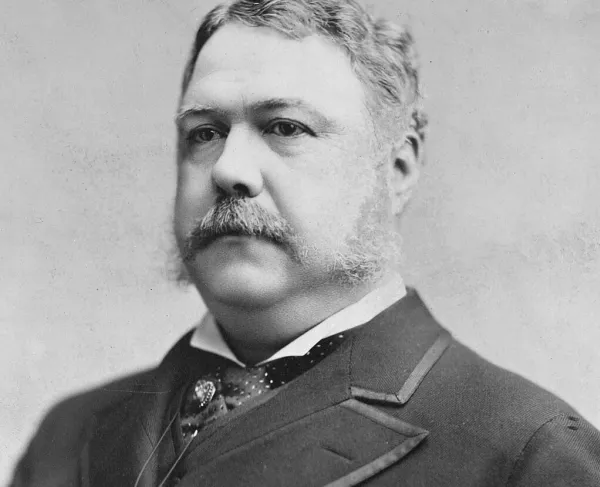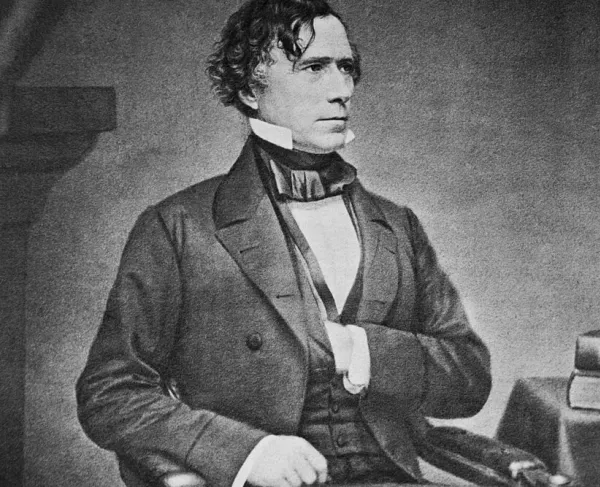John Tyler

John Tyler’s life gave American politics a broad swath of firsts. He was the first Vice President to ascend to the office of the Presidency, the first President to be expelled from his own political party and the first president to get married while in office.
Born on March 29, 1790, in Charles City Virginia, John Tyler grew up on his family's plantation. He attended the College of William and Mary, graduating in 1807 and was admitted to the Virginia Bar in 1809. In 1811, he began his political career, joining the lower house of the Virginia Legislature where he served from 1811 to 1816. He was elected to the House of Representatives in 1817 where he served till 1821. Afterwards, Tyler returned to the Virginia Legislature in 1823, then ran for and was elected to the Governorship of Virginia two years later in 1825. However, he would only serve two years of the four-year term with the State Legislature electing him a US Senator in 1827. He stayed in this position till 1836 when he resigned in protest after refusing to reverse his vote on a controversial vote despite the wishes of the State Legislature in Virginia. He returned to Virginia and enjoyed a brief pause from politics before he once again returned to the State Legislature in 1839 and was approached stand as the running mate for the Whig candidate for President against the incumbent Martin Van Buren in the 1840 election. William Henry Harrison trounced Van Buren, handily winning the election with 237 electoral votes to Van Buren’s 60. However, in the opening days of Harrison’s presidency, he fell ill and died.
Thus began John Tyler’s foray into executive politics. At the time, it was not clear what the role of the Vice President would be in the event that the President passed away while in office, and Tyler was eager to set the precedent. Not content to merely be a Vice President acting in the role of chief executive, Tyler effectively declared that he was the new President and moved himself, his wife and his belongings into the White House. From the very beginning, his dedication to strict constitutionality and states’ rights put him in conflict with his fellow Whigs in Congress. Tyler vetoed multiple bills designed to form a national bank on the grounds that he believed they violated states’ rights, to the consternation of Congress. This enmity continued to escalate until he was ultimately expelled from the Whig party and his cabinet with the exception of his Secretary of State resigned. This sort of chaotic governance continued unbated as Tyler confounded both Whigs and Democratic-Republicans. He vetoed a set of tariff bills in defiance of Congress, this set of vetoes so angered members of Congress that a committee headed up by former president John Quincy Adams attempted to impeach him for misuse of his veto powers. Although the attempt at impeachment did fail, it showcases the antagonistic nature of the relationship between Tyler and leaders in Congress.
His administration did meet with some success however, with the 1842 Webster-Ashburn Treaty ending the dispute between the United States and Great Britain over the Oregon Country as well as the 1845 annexation of the republic of Texas after its independence from Mexico. In terms of domestic policy, one of his greatest achievements and compromises with his Congressional adversaries was the 1842 tariff act which was designed to protect Northern industry and manufacturing; this act was a compromise after the vetoes and standoffs between Tyler and Congress. He also brought an end to the destructive Seminole Wars in Florida in 1845. Despite these successes, Tyler’s administration was exceedingly divisive. He filled the empty seats in his cabinet with Southern Democratic-Republicans who put the interest of the South into focus above other regional interests within the United States.
While all of the political drama unfolded around him, Tyler’s first wife, Letitia Tyler passed away in 1842. President Tyler remarried while still in office to a young woman named Julia Gardner who remained with him till the end of his life.
While he considered seeking a second term, his widespread unpopularity led him to bow out and endorse James K. Polk, possibly out of spite directed at the Whig Party which had expelled him for his actions during his Presidency. The end of his term in the White House was the end of Tyler’s political career. However, in 1861, he led a compromise peace delegation in a last-ditch attempt to stave off the American Civil War. When this failed, he returned to his native Virginia where he participated in the state convention to decide the question of secession and was elected to the provisional Confederate Congress only a few months before his death.
John Tyler passed away on January 18, 1862, and was buried in Hollywood Cemetery in Richmond Virginia.


